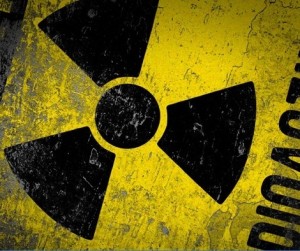 |
| There is no safe level of radiation |
Nuclear waste released from the Cumbrian reprocessing site has made fish and shellfish caught off the Dumfriesshire coast slightly radioactive.
And fish-fans in Dumfriesshire have the highest exposure to nuclear radiation of anyone north of the Border.
Despite Sellafield nuclear station being situated 80 miles away, the new report reveals that the nuclear power station is still having an impact on Scotland.
And although the levels are within safe EU limits, Sellafield and Scottish nuclear power stations have infiltrated the food chain here.
Dr Richard Dixon, director of Friends of the Earth Scotland, said: "There is no safe level of radiation. Nuclear technology... poses an ongoing threat to public health."
Traces of radiation were found in fruit, potatoes and vegetables near to Dounreay nuclear power station in Caithness, in the far north-east of Scotland.
Whilst in Chapelcross, in Dumfriesshire, nuclear radiation has made its way into the milk.
Where as at Faslane, near Helensburgh, Dunbartonshire, the destination of Britain's nuclear submarines where liquid radioactive waste is discharged into the Gareloch, beef has been revealed to contain a small amount of radiation.
The Radioactivity in Food and the Environment (RIFE) report by the Scottish Environment Protection Agency (Sepa)- the Environment Agency and the Food Standards Agency (FSA) - has revealed the true extent of radiation exposure in the new report.
A spokesman for the FSA in Scotland said: "There are low levels of radiation present naturally in the environment.
"Then there are nuclear sites which discharge material as an aerial discharge into the air or liquid discharge into the sea. The discharge from the sea is more likely to affect fish and aerial discharge will get into the land.
"These are, however, very small levels of no concern to anybody."
The findings also reveal the type of person likely to have been exposed to the highest dose of radioactivity in 2013 and showed that in Scotland, those susceptible to the highest dose would be an adult eating fish caught off Dumfriesshire.
They would have consumed 0.44 MILLISIEVERTs - around 4 per cent of the EU safe limit, whilst close to Dounreay adults who consume green vegetables will get the most radiation.
The unborn children of pregnant women living within 550 yards of the Hunterston B site, in North Ayrshire - one of Scotland's two working nuclear power stations -would received the highest dose there.
Dr Richard Dixon, director of Friends of the Earth Scotland, said: "There is no safe level of radiation. Nuclear technology... poses an ongoing threat to public health."
A spokesman for Dounreay Site Restoration said: "The levels of radioactivity found in the vicinity of Dounreay are within the limits laid down in law."
A Scottish Government spokesman said: "There are stringent regulatory regimes in place for protecting the public and the environment from radiation."
The 2014 RIFE Report show doses received by members of the public living near sites, and across Scotland, were well within legal dose limits."
It should be made clear that after Fukushima the EU and US raised the maximum legal radiation dose limit.
From https://www.activistpost.com/2011/04/eu-follows-epa-raises-acceptable.html
In the US according to PEER (Public Employees for Environmental Responsibility, the new standards would result in a “nearly 1000-fold increase for exposure to strontium-90, a 3000 to 100,000-fold hike for exposure to iodine-131; and an almost 25,000 rise for exposure to radioactive nickel-63” in drinking water.
EU ordinance 297/2011 raises the Maximum Levels of radiation and radioactive isotopes for food and feed to rather serious levels. In some cases, such as the case of Cesium-134 and Cesium-137, the levels are actually twice the amount of previously acceptable levels. Many of these increases are allowed in products such as infant formula and baby foods.
It should be noted that so far the new EU changes only apply to food imported from Japan. The justification behind this is that in the event of a nuclear emergency the traditional levels of acceptable radiation should be ignored so as not to cause a food shortage as a result of legal constraints.








No comments:
Post a Comment